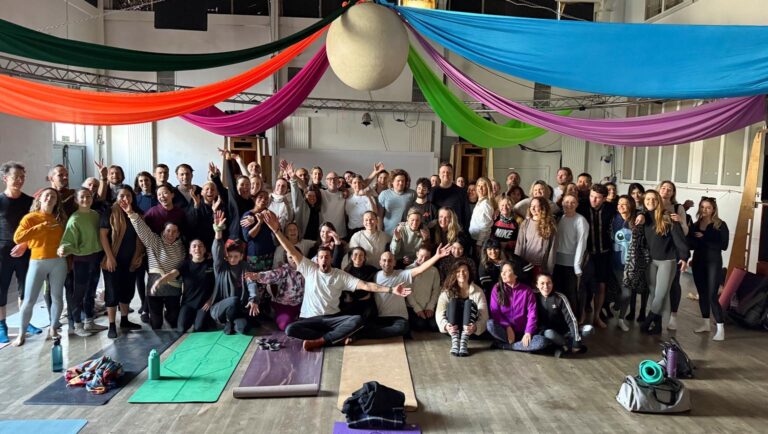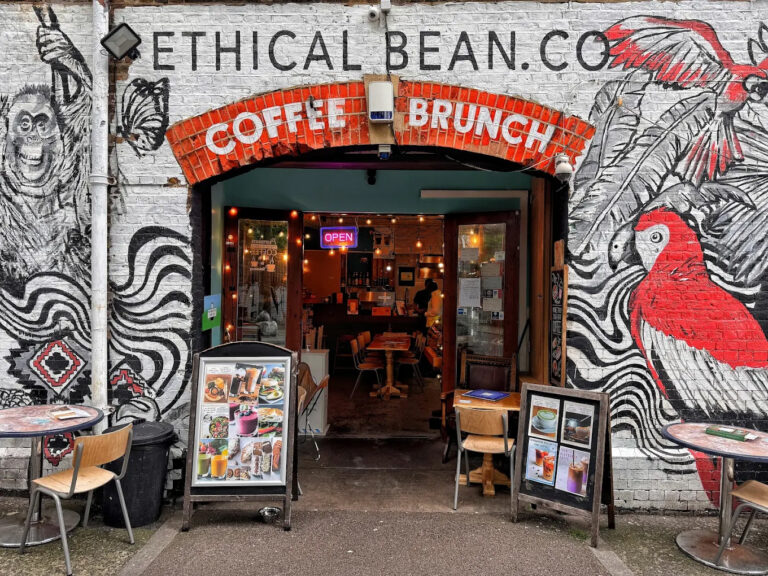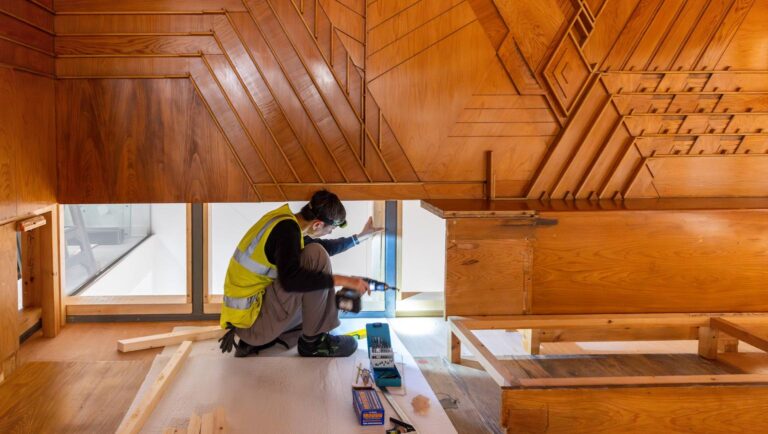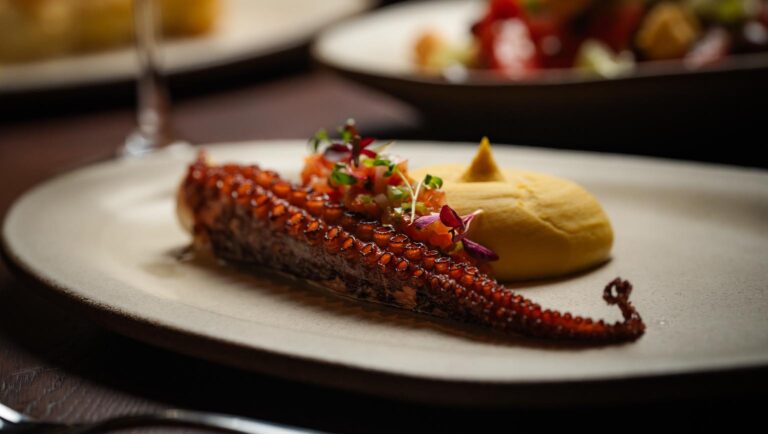
Mattia from Community Yoga Project on the joy of human connection
Exploring the health advantages of belonging to something bigger than ourselves
New buildings on the Olympic Park site are deemed “iconic” before the opening ribbon has been cut. Culture and heritage is being retrofitted like a ‘pop up’ style Chinese or Middle Eastern city inside of London, a leading Western city that prides itself on its history for tourism and even exports. English heritage to reinforce its Britishness.
The newly dubbed Stratford City is postcode E20, resulting in Stratford’s better-known postcode E15 becoming its poorer cousin. I live in E15 and as an artist of British-Bangladeshi background the few creative opportunities that trickle-down have to be fought over. Public commissions often expect me to engage my own, presumed disengaged community which brings up ethical questions like prejudicial assumptions and access to resources for underserved communities.
I was artist-in-residence at a university located at Here East in E20 during which I took MA students, local artists and communities to explore the divide between postcodes E20 and E15 The resulting exhibition, called Connecting the two sides of Stratford, almost didn’t happen. Estate managers wanted to pull it at the last minute, but they had agreed to host the exhibition as part of Newham’s first Heritage Month in 2018, so it finally took place stretching outside on hoarding in the Here East yard.
Local communities from the surrounding areas attended because it was a reflection about their lived experiences. The following year the outdoor hoardings was covered up with acceptable graffiti showing Disney characters and my emails to managers were not being returned. Locals felt unwelcome here at Here East.
In E20 the arts are being used to underpin building development on steroids. Digital advertisement boards show a toxically positive environment where dreams are to be realised inside world-class cultural and media establishments yet to come. However change in the surrounding four boroughs is incremental with an ever increasing divide of widening social inequalities where culture and heritage is systematically being eroded.
For locals, the trickle-down economics of capitalism promises benefits resulting in increased house prices we’re told, but many families cannot afford to relocate having spent years building community networks, and with it a localised heritage.

Once the Olympics was announced the word Legacy came part and parcel. The International Olympics Committee delegates were shown a sea of financially poor black, Asian and working class white faces and within five years a mammoth £8.8bn funnelled into a two week-long event.
Local people complained that they were being denied access to the Games. Any critical voices were locked up for protesting, like Trenton Oldfield, founder of This Is Not A Gateway Festival whose public talks offered alternative viewpoints around the changes taking place. The Workshop Bar at the Theatre Royal Stratford East stocked up 30% extra goods but the footfall didn’t result in paying customers, instead losing 30%, with pick-up still remaining slow.
Creativity had been stretched too quickly here, and there were always going to be victims. Today there are no signs of any dissidence on the E15-E20 border, just disaffection, heritage-washing, zealots giving out free Bibles and Qurans and endless shop ’til you drop experiences.
During an early morning croissant-clad breakfast held inside a smelly fish factory on the border of Hackney, artists living in and near Vittoria Wharf (see p.6) complained that it was a case of survival or to leave London. Months later Vittoria Wharf was part demolished and replaced with a rustic new footbridge, brutally connecting the E20 site to Hackney. Biased consultations and subsequent demolitions are traumatic for embedded communities, resulting in a destruction of their collective memory and their own emergent legacies.
Around the same time Robin Hood Gardens in Tower Hamlets was demolished with a small section of the building kept like an object in a cabinet of curiosities for future intellectuals and voyeurs to ponder over at the V&A. The context was being removed from local people: the East End was ripe for looting, just like the historic actions of Imperialistic and colonial pursuits in Africa and Asia.
As local people and artists we feel inspired by spaces that aren’t the neoliberal places constructed by computer generated off-the-peg designs that try and tell us who we are through representations on large digital screens. Recently an artist displaced by the Olympics wanted to revisit 2012 but was at a loss: “I am still unsure what I feel about what happened” he said. In the decade-long narrative around the Olympics Legacy what’s telling is what has survived and what is still under threat in the manic movement of international financial capital into the poor and needy East End.
For the working-class, ethnic minority communities and for artists, successful places are where lived experiences create localised heritage and with it a genuine legacy starts to emerge – these people and places need to be nurtured and protected like the recent ‘Save Brick Lane’ campaign highlights.
The Greater Carpenters Estate Neighbourhood Plan shows that the Focus E15 Mothers can be accommodated locally and the longevity of Queen’s Market in Upton Park proves it can be refurbished without demolition, yet these struggles also highlight that the Olympic Legacy is only too willing to use the spectre of displacement against local embedded communities that has started a postcode war between E20 and its surrounding communities.
Saif Osmani is a visual artist and architectural designer living and working in East London and a graduate of UCL Bartlett. He is a co-founder of Bengali East End Heritage Society. Recent projects include Cockney Conversations Month 2022 and the ‘Save Brick Lane’ campaign. Follow him: @saifosmani

Exploring the health advantages of belonging to something bigger than ourselves

Your timely reminder to go visit these amazing restaurants, bars and cafes this summer while we wait for better bridge access…

The twist and turns of post-Olympics decision-making that brought 250,000 objects to Here East

This thoroughly modern restaurant may be far from the taverna, but it’s filled with Mediterranean flavours, and much more

How Hackney’s growing textile reuse infrastructure is inspiring the eco-conscious fashion designers of tomorrow

Nikkei food – where Japanese sushi meets Peruvian ceviche – and great cocktails at this popular local spot
A joint venture in collaborative local media from:


In partnership with

Regulated by IMRESSS, the Independent Monitor for the Press CIC.
For more info on our complaints policy, or to make a complaint, visit FAQ.
